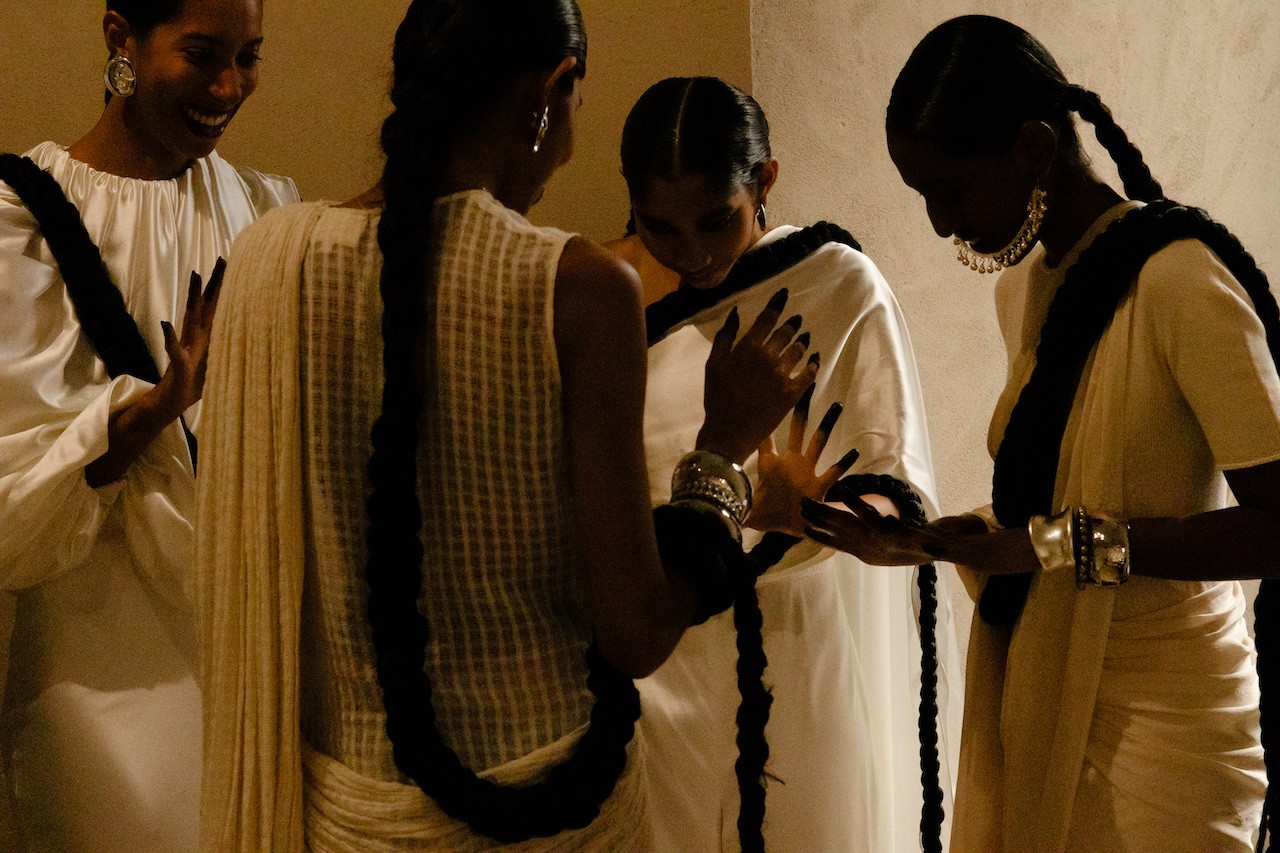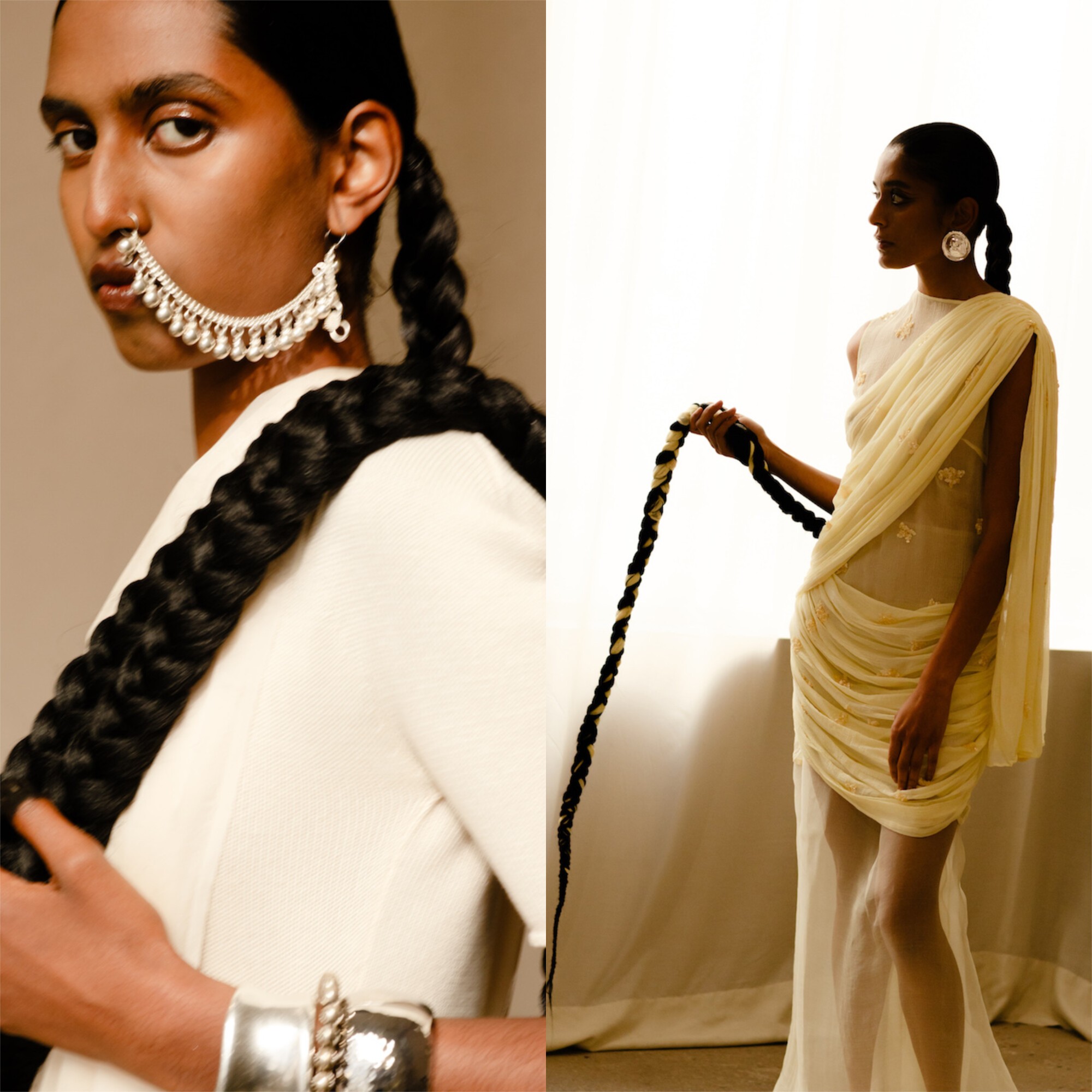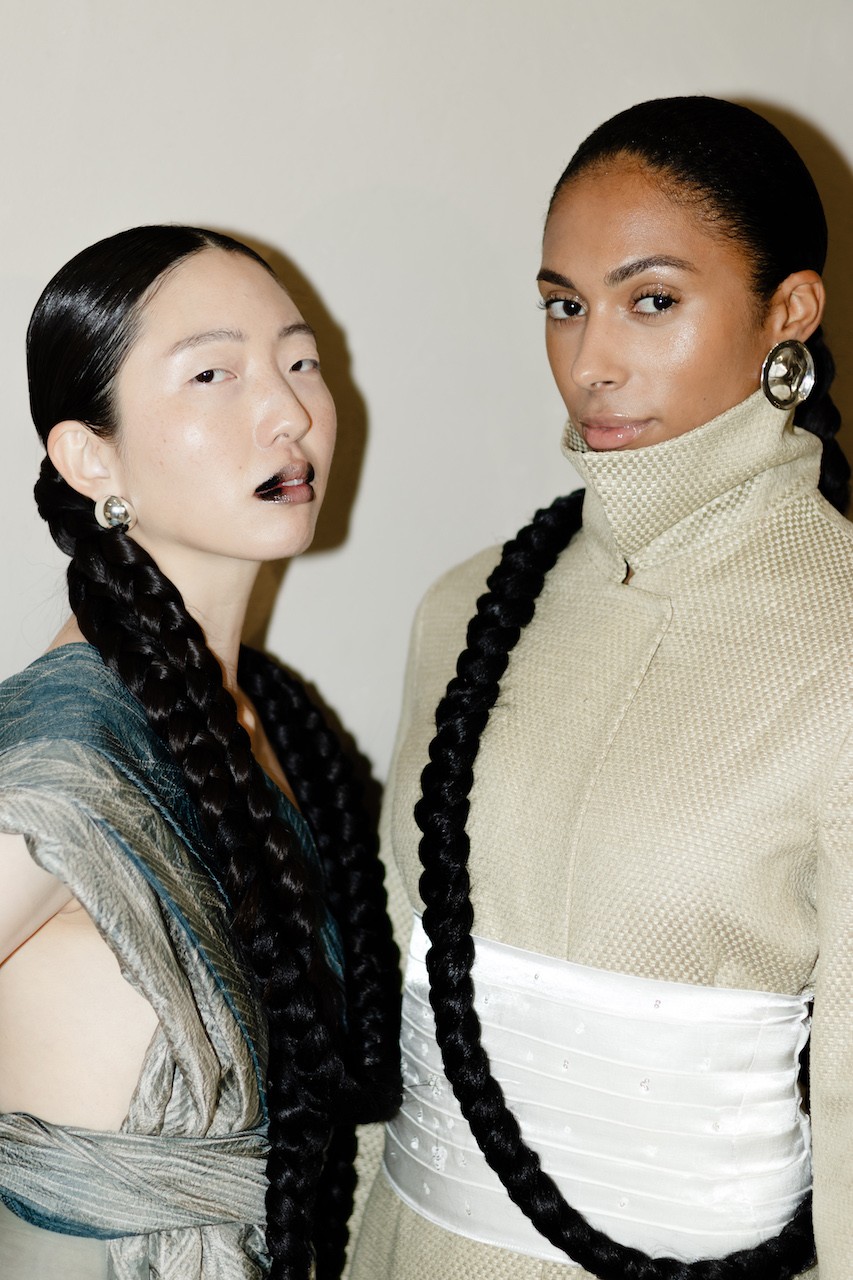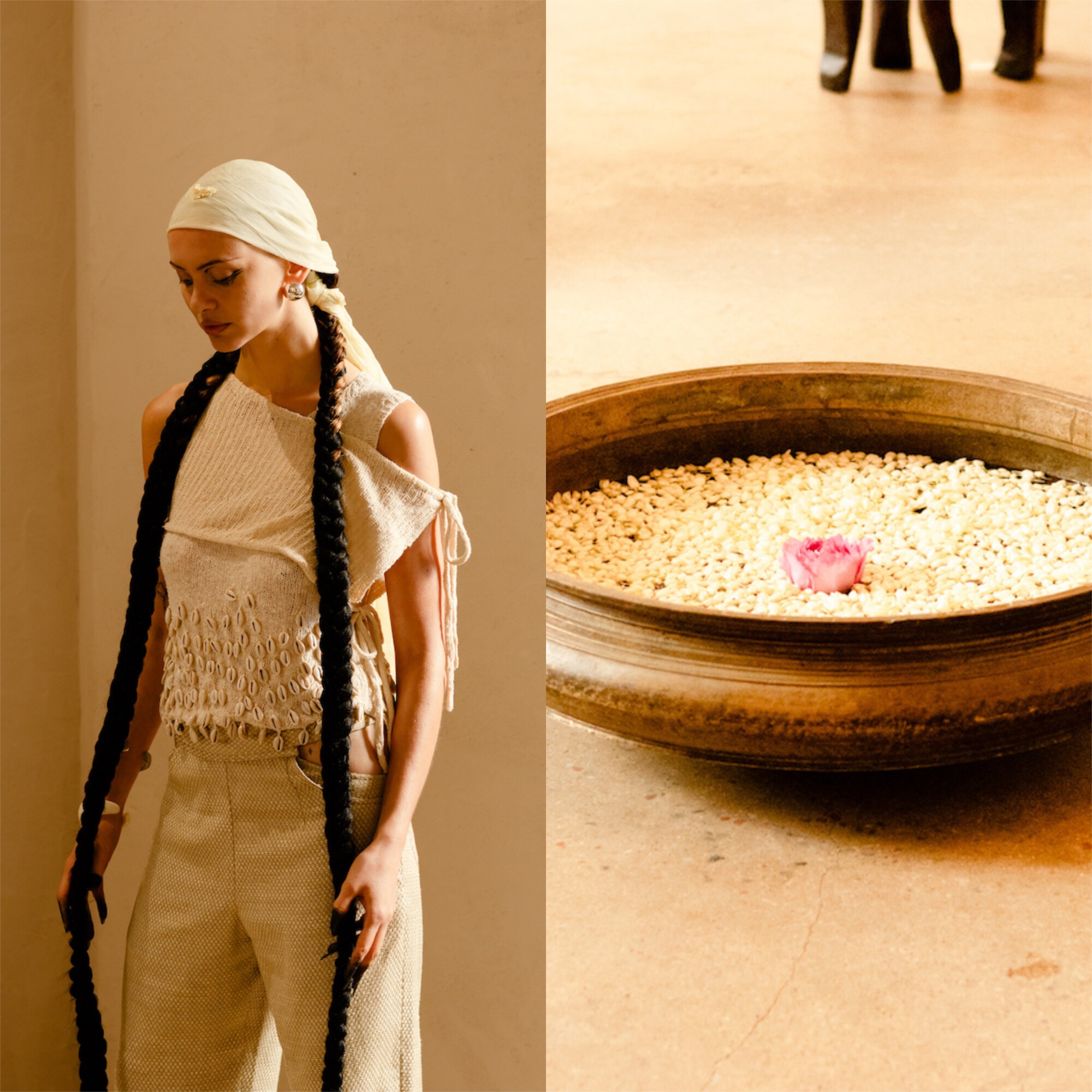Gundi Brings Artisanal Resistance to Paris Fashion Week
Fashion — 18.10.25
Words: Gabriella Onessimo
Photography: Yoann Guerini & Jonne Scholten
During Paris Fashion Week, Gundi—an artisanal label founded and helmed by Natasha Sumant—presented an evocative collection that explores ideas of feminine resistance. The slow fashion studio has been on the rise for its contemporary fusion of heritage Indian craft with a singular, experimental lens, and this time, Sumant deepened her commitment to taking tradition into the unconventional—taking inspiration in Draupadi, a powerful queen-turned-heroine from the ancient epic Mahabharata.

Photo by Yoann Guerini
In an interview with TEETH, Sumant dove into the collection’s inspiration, unraveling the power of clothing in times where our bodies are the subject of control and in turn, vessels for renewal.
TEETH: Draupadi’s story is a powerful anchor for this collection. What about her narrative resonated with you most and inspired the direction of the show?
NS: I was particularly interested in exploring the concept of women’s rage and the darker side of femininity through the styling and theme. I loved that she was such a powerful mythological figure, and so much of my work draws from the power of the feminine. Her story feels very reflective of the times we live in, where consent, the policing of women’s bodies, and the rage that stems from these issues are so prevalent. Clothing and the way women choose to present their bodies are often central to these conversations.


Photos by Jonne Scholten
GUNDI means “misfit” in Hindi, and the brand’s ethos has always been to highlight this kind of woman in culture. From a design perspective, I’ve also been exploring the intersection of draping and tailoring, so visually, her story worked perfectly as an anchor point. I love tackling different themes each season, and her story felt like the ideal lens through which to explore this one.

Photos by Jonne Scholten
TEETH: The tension between drape and structure runs throughout the silhouettes. How did you approach translating such an emotional narrative into form and fabric?
NS: We always start with our base, a shift dress, and develop the silhouettes through extensive draping to see where the drape naturally meets a seam. We also referenced the many ways women across India have historically draped sarees for functionality and movement. Before colonialism, each region had its own unique saree drape, and we drew from that diversity to create new, unexpected shapes.
TEETH: Can you dive a little bit more into the collection motifs, and what they symbolize within this context?
NS: We worked with the ideas of raveling and unraveling as guiding motifs. We developed a new loosely woven cotton fabric and applied it to our saree dress silhouette, emphasizing texture and imperfection. We also used machine shibori (a process that involves stitching, dyeing, and then unravelling) to create patterns and textures in mulberry silk. Transparency played a big role as well; some pieces were made from chiffon and silk organza, with drapes or embroidery covering only the essential parts. It became a visual meditation on the policing of women’s bodies.

Photo by Jonne Scholten
TEETH: Craft and collaboration are integral to GUNDI. How did working with indigenous women’s craft groups shape the design and spirit of the pieces?
NS: Working with indigenous women’s craft groups is central to GUNDI’s practice. Each season, we explore new fabric techniques rooted in the traditions of these communities. For this collection, we collaborated with a group in Rajasthan on the shibori, which is a native craft there. Every piece is shaped by the artisan’s skill and the natural limitations of the material—we let the fabric dictate the drape and form.

Photos by Jonne Scholten
Collaborating with these groups also allows us to use the best possible materials, like organic kala cotton, eri silk for the knitwear, and vintage cowrie shells. The handmade nature of the work gives the garments a kind of patina—delicate yet punk—which resonates deeply with me.